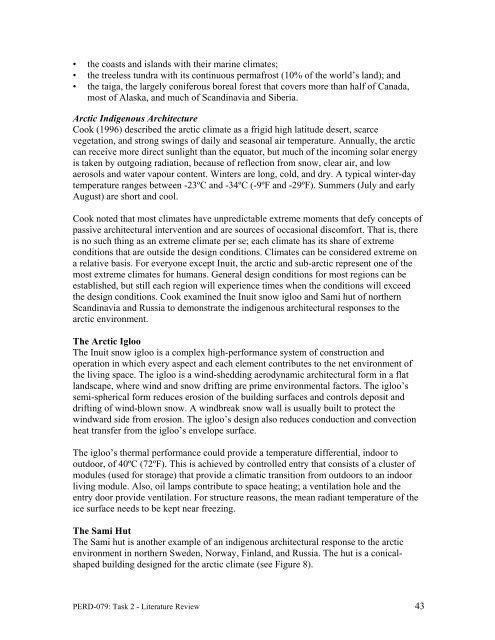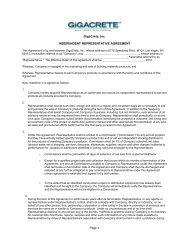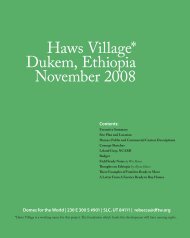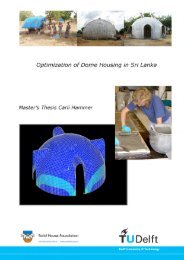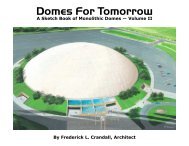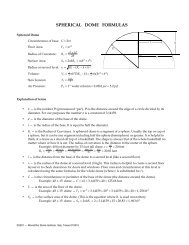Literature Review on Building Envelope, Heating and ... - Beeshive.org
Literature Review on Building Envelope, Heating and ... - Beeshive.org
Literature Review on Building Envelope, Heating and ... - Beeshive.org
You also want an ePaper? Increase the reach of your titles
YUMPU automatically turns print PDFs into web optimized ePapers that Google loves.
• the coasts <strong>and</strong> isl<strong>and</strong>s with their marine climates;<br />
• the treeless tundra with its c<strong>on</strong>tinuous permafrost (10% of the world’s l<strong>and</strong>); <strong>and</strong><br />
• the taiga, the largely c<strong>on</strong>iferous boreal forest that covers more than half of Canada,<br />
most of Alaska, <strong>and</strong> much of Sc<strong>and</strong>inavia <strong>and</strong> Siberia.<br />
Arctic Indigenous Architecture<br />
Cook (1996) described the arctic climate as a frigid high latitude desert, scarce<br />
vegetati<strong>on</strong>, <strong>and</strong> str<strong>on</strong>g swings of daily <strong>and</strong> seas<strong>on</strong>al air temperature. Annually, the arctic<br />
can receive more direct sunlight than the equator, but much of the incoming solar energy<br />
is taken by outgoing radiati<strong>on</strong>, because of reflecti<strong>on</strong> from snow, clear air, <strong>and</strong> low<br />
aerosols <strong>and</strong> water vapour c<strong>on</strong>tent. Winters are l<strong>on</strong>g, cold, <strong>and</strong> dry. A typical winter-day<br />
temperature ranges between -23ºC <strong>and</strong> -34ºC (-9ºF <strong>and</strong> -29ºF). Summers (July <strong>and</strong> early<br />
August) are short <strong>and</strong> cool.<br />
Cook noted that most climates have unpredictable extreme moments that defy c<strong>on</strong>cepts of<br />
passive architectural interventi<strong>on</strong> <strong>and</strong> are sources of occasi<strong>on</strong>al discomfort. That is, there<br />
is no such thing as an extreme climate per se; each climate has its share of extreme<br />
c<strong>on</strong>diti<strong>on</strong>s that are outside the design c<strong>on</strong>diti<strong>on</strong>s. Climates can be c<strong>on</strong>sidered extreme <strong>on</strong><br />
a relative basis. For every<strong>on</strong>e except Inuit, the arctic <strong>and</strong> sub-arctic represent <strong>on</strong>e of the<br />
most extreme climates for humans. General design c<strong>on</strong>diti<strong>on</strong>s for most regi<strong>on</strong>s can be<br />
established, but still each regi<strong>on</strong> will experience times when the c<strong>on</strong>diti<strong>on</strong>s will exceed<br />
the design c<strong>on</strong>diti<strong>on</strong>s. Cook examined the Inuit snow igloo <strong>and</strong> Sami hut of northern<br />
Sc<strong>and</strong>inavia <strong>and</strong> Russia to dem<strong>on</strong>strate the indigenous architectural resp<strong>on</strong>ses to the<br />
arctic envir<strong>on</strong>ment.<br />
The Arctic Igloo<br />
The Inuit snow igloo is a complex high-performance system of c<strong>on</strong>structi<strong>on</strong> <strong>and</strong><br />
operati<strong>on</strong> in which every aspect <strong>and</strong> each element c<strong>on</strong>tributes to the net envir<strong>on</strong>ment of<br />
the living space. The igloo is a wind-shedding aerodynamic architectural form in a flat<br />
l<strong>and</strong>scape, where wind <strong>and</strong> snow drifting are prime envir<strong>on</strong>mental factors. The igloo’s<br />
semi-spherical form reduces erosi<strong>on</strong> of the building surfaces <strong>and</strong> c<strong>on</strong>trols deposit <strong>and</strong><br />
drifting of wind-blown snow. A windbreak snow wall is usually built to protect the<br />
windward side from erosi<strong>on</strong>. The igloo’s design also reduces c<strong>on</strong>ducti<strong>on</strong> <strong>and</strong> c<strong>on</strong>vecti<strong>on</strong><br />
heat transfer from the igloo’s envelope surface.<br />
The igloo’s thermal performance could provide a temperature differential, indoor to<br />
outdoor, of 40ºC (72ºF). This is achieved by c<strong>on</strong>trolled entry that c<strong>on</strong>sists of a cluster of<br />
modules (used for storage) that provide a climatic transiti<strong>on</strong> from outdoors to an indoor<br />
living module. Also, oil lamps c<strong>on</strong>tribute to space heating; a ventilati<strong>on</strong> hole <strong>and</strong> the<br />
entry door provide ventilati<strong>on</strong>. For structure reas<strong>on</strong>s, the mean radiant temperature of the<br />
ice surface needs to be kept near freezing.<br />
The Sami Hut<br />
The Sami hut is another example of an indigenous architectural resp<strong>on</strong>se to the arctic<br />
envir<strong>on</strong>ment in northern Sweden, Norway, Finl<strong>and</strong>, <strong>and</strong> Russia. The hut is a c<strong>on</strong>icalshaped<br />
building designed for the arctic climate (see Figure 8).<br />
PERD-079: Task 2 - <str<strong>on</strong>g>Literature</str<strong>on</strong>g> <str<strong>on</strong>g>Review</str<strong>on</strong>g> 43


